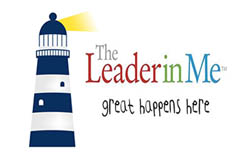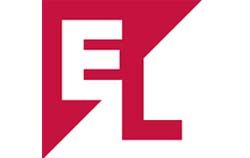 Ms. Weber
Ms. Weber
Dear Parents and Students,
Welcome to my webpage! Thanks for visiting! I am looking forward to a wonderful year as your child’s art teacher and have been busy planning many exciting lessons. Throughout the year students will gain experience using a variety of art supplies and tools as they work on developing their artistic skills and creativity. Art, however, is much more than simply making things. Students also learn about famous artists, art from world cultures and the elements of art. In addition, students will develop their artistic vocabulary as they discuss masterpieces, cultural exemplars and peer artwork. Please remember most projects take several classes to complete and are often proudly displayed throughout the school. It may be some time before your son or daughter’s artwork comes home.
Art Supply Recipes
*Always have an adult help you!
PAINT RECIPES
SIDEWALK PAINT
Mix ¼ cup cornstarch, ¼ cup water, and food coloring.
WINDOW PAINT
Measure 2 tablespoons of powdered tempera paint into the container. Add 1 tablespoon of warm water and mix to a paste. Add 1 teaspoon of Joy dishwashing liquid, mixing gently to avoid becoming sudsy. Dries on a window in about 10 minutes. Washes off with a water/vinegar solution.
FACE PAINT
In one section of a muffin tin, mix together 1 tablespoon shortening, 1 teaspoon flour & one drop of food coloring. Repeat to make several colors in the sections of the muffin tin. Use your fingers to paint your face. Wash off face with warm water & soap.
CLAY RECIPES
BASIC PLAYDOUGH
Combine 2 cups flour, 1 cup salt, and 2 tablespoons vegetable oil. Gradually add 1 cup water colored with 5 or 6 drops of food coloring. Stir and knead. Keep in a plastic bag or covered container for approx. 2 to 4 weeks. This is not good dough for hardening finished objects.
CLAY FOR HAND OR FOOT PRINTS
Combine 2 cups flour, ½ cup salt, and ¾ cup water. Knead, knead, and knead some more. Roll with a rolling pin, press in your hand or foot! Let air dry or put in a 300 degree oven for 1 hour. You can color with food coloring before or color (paint of any kind) after and seal with a spray or brush on sealer.
SALT DOUGH
Combine 2 cups flour and 1 cup salt in a bowl. Mix well. Slowly add 1cup water and stir to form a ball. Knead 7-10 minutes to give dough a firm consistency. To harden the finished product let air dry or bake at 325 degrees for 30 minutes. Great for making ornaments!
CRAYON RECIPES
SOAP CRAYONS
Mix ¼ cup water & 1 ¾ cups soap flakes together. Add 50 drops of food coloring & put mixture into an ice cube tray. Allow to harden. Break or cut into pieces. Fun to write with on the tub when bathing & face & hands! Can also be used when still a little soft as face paint!
GLUE RECIPES
GLUE
Mix 3⁄4 cup water, 2 Tbsp. corn syrup and 1 tsp. white vinegar in a saucepan. Bring to a rolling boil. In a small bowl, mix 1⁄2 cup cornstarch and ¾ cup cold water. Add this mixture slowly to the first mixture. Stir constantly. Let stand overnight before using.
Great sites to learn about famous artists:
http://www.artcyclopedia.com/
http://www.ibiblio.org/wm/paint/auth/
NEW YORK STATE VISUAL ART STANDARDS
Standard 1: Creating, Performing and Participating in the Arts
Students:
A.) experiment and create art works, in a variety of mediums (drawing, painting, sculpture, ceramics, printmaking, video, and computer graphics), based on a range of individual and collective experiences.
B.) develop their own ideas and images through the exploration and creation of art works based on themes, symbols and events.
C.) understand and use the elements and principles of art (line, color, texture, shape) in order to communicate their ideas.
D.) reveal through their own artwork understanding of how art mediums and techniques influence their creative decisions.
E.) identify and use, in individual and group experiences, some of the roles and means for designing, producing, and exhibiting works of art.
Standard 2: Knowing and Using Art Materials and Resources
Students:
A.) understand the characteristics of various mediums (two-dimensional, three-dimensional, electronic images) in order to select those that are appropriate for their purposes and intent.
B.) develop skills with electronic media as a means of expressing visual ideas.
C.) know about some cultural institutions (museums and galleries) and community opportunities (art festivals) for looking at original art and talking to visiting artists, to increase their understanding of art.
D.) give examples of adults who make their living in the arts professions.
Standard 3: Responding to and Analyzing Works of Art
Students:
A.) explain their reflections about the meanings, purposes, and sources of works of art; describe their responses to the works and the reasons for those responses.
B.) explain the visual and other sensory qualities (surface, colors, textures, shape, sizes, volumes) found in a wide variety of art works.
C.) explain the themes that are found in works of visual art and how the art works are related to other forms of art (dance, music, theatre, etc.).
D.) explain how ideas, themes, or concepts in the visual arts are expressed in other disciplines (e.g., math, science, literature, social studies, etc.).
Standard 4: Understanding the Cultural Dimensions and Contributions of the Arts
Students:
A.) look at and discuss a variety of art works and artifacts from world cultures to discover some important ideas, issues, and events of those cultures.
B.) look at a variety of artwork and artifacts from diverse cultures of the United States and identify some of the distinguishing characteristics.
C.) create artworks that show the influence of a particular culture.








